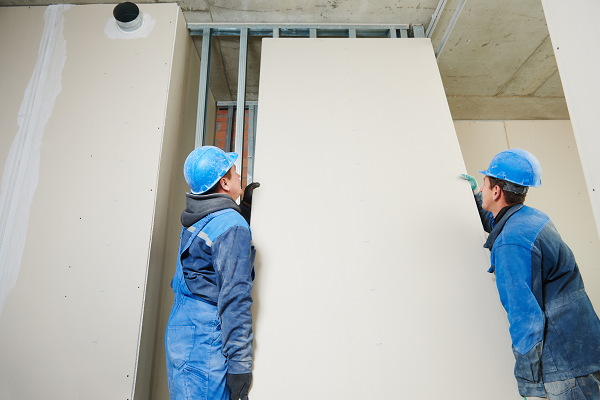Cost Effective Drywall Repair Options for Your Fort Worth Residential Property
Cost Effective Drywall Repair Options for Your Fort Worth Residential Property
Blog Article
Full Overview to Effective and Reputable Drywall Setup
Drywall setup is an important part of any type of building or renovation project, demanding a thorough technique to ensure both efficiency and integrity. It is important to discover the nuances of each step in the procedure, as they jointly contribute to the overall success of the drywall installation.
Vital Tools for Drywalling
When getting started on a drywall installment task, having the right tools is vital for accomplishing a professional coating. Important tools include a drywall blade, measuring tape, and a T-square, which are essential for precise dimensions and smooth cuts. A drywall lift is additionally extremely valuable, particularly for ceiling installations, permitting simpler handling of heavy panels.
For attaching the drywall, a cordless drill and drywall screws are essential. The drill ought to be geared up with a drywall bit to guarantee performance and accuracy. Additionally, a crucial device is the drywall saw, which helps with cutting around various other obstacles and electrical outlets.

Additionally, safety equipment such as safety glasses and a dirt mask are vital to make certain individual safety during the setup process. Utilizing the right tools not only improves the high quality of the installation however likewise improves the operations, making the task more reliable overall.
Preparing the Area

Next, examine the problem of the ceilings and walls. Fix any type of existing damages, such as openings, fractures, or peeling paint, to make certain a smooth and also surface area for drywall application. Furthermore, look for electric outlets, plumbing lines, and a/c ducts, noting their places to avoid issues during installment.
It is likewise crucial to determine the area precisely, establishing the measurements of the ceilings and walls to determine the appropriate amount of drywall needed. Develop an in-depth strategy that includes the layout and positioning of the drywall panels.
Installation Methods
Reliable installment techniques are important for accomplishing a specialist surface in drywall projects. Proper dimension and cutting of drywall sheets are basic steps.
When hanging drywall, begin with the leading and job downward, ensuring that the lengthy side of the board is perpendicular to the framing. Secure the sheets with screws as opposed to nails, which give better holding power and lower the threat of standing out. Area screws every 12 inches along the edges and every 16 inches in the field of the board.
For edges, utilize corner beads to achieve sharp, clean sides. When installing on ceilings, utilize a drywall lift or have a companion help in holding the sheets in position (sheetrock repair fort worth). Maintain a void of concerning 1/4 inch above the flooring and ceiling to suit development and contraction
Completing Touches

As soon as the tape is in location, it's time to use the very first coat of joint compound, also recognized as mud. Make use of a 10 to 12-inch taping knife to spread out the compound equally over the taped joints, feathering the sides to blend with the surrounding drywall.
Allow the substance to dry thoroughly, commonly 24-hour. After drying, sand the surface area gently with fine-grit sandpaper to eliminate any type of imperfections. drywall repair. Repeat the mudding and sanding process, generally 2 to three layers, making sure each layer is smooth and flush with the drywall surface
Usual Errors to Avoid
Lots of Do it yourself lovers experience pitfalls during drywall installation that can jeopardize the last results. One common view it now blunder is stopping working to appropriately reduce and determine drywall sheets.
One more regular mistake is incorrect attachment. Using too few screws or nails can bring about loose drywall, while overdriving fasteners can trigger the paper to tear, deteriorating the framework. It's crucial to keep regular spacing, generally every 16 inches, and to make certain that bolts are flush with the surface area.
Furthermore, not resolving wetness problems prior to installation can cause mold development and structural damages. Constantly evaluate the environment and usage moisture-resistant drywall in high-humidity areas.
Conclusion
Efficient and trustworthy drywall installation calls for precise focus to detail throughout the process. Avoiding typical mistakes better adds to an expert result, highlighting the relevance of link accuracy and strategy in successful drywall jobs.
It is essential to explore the nuances of each action in the procedure, as they jointly contribute to the overall success of the drywall Your Domain Name installation.When embarking on a drywall setup project, having the right tools is important for accomplishing a specialist finish.For fastening the drywall, a cordless drill and drywall screws are needed.Effectively preparing the area is crucial for an effective drywall installment.Effective installation methods are important for attaining an expert finish in drywall tasks.
Report this page